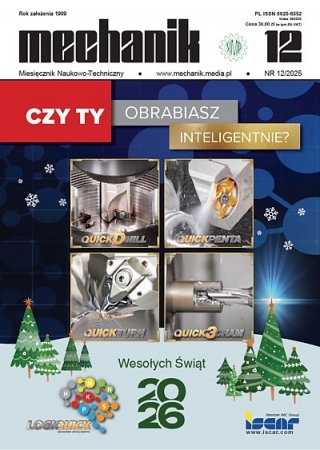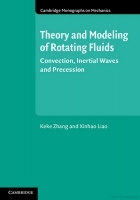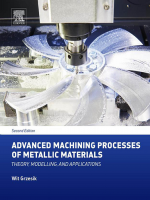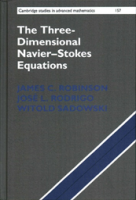The influence of milling parameters on the surface roughness of glass and carbon fiber reinforced plastics *
Wpływ parametrów frezowania na chropowatość powierzchni kompozytów polimerowych z włóknami szklanymi i węglowymi
Author: Krzysztof Ciecieląg, Kazimierz Zaleski, Krzysztof Kęcik
Mechanik nr 10/2019 - Obróbka skrawaniem
ABSTRACT: In this paper, the impact of milling process parameters on the roughness of surface of glass and carbon fiber reinforced plastics was analyzed. The influence of feed per tooth, cutting speed and depth of cut on selected surface roughness parameters was determined. It was found that the surface roughness after milling carbon fiber reinforced plastics was greater compared to the surface of glass fiber reinforced plastics.
KEYWORDS: polymer composites, milling, surface roughness
STRESZCZENIE: Przeanalizowano wpływ parametrów technologicznych frezowania na chropowatość powierzchni kompozytów polimerowych z włóknami szklanymi i węglowymi. Określono wpływ posuwu na ostrze, prędkości skrawania i głębokości skrawania na wybrane parametry chropowatości powierzchni. Stwierdzono, że po frezowaniu chropowatość powierzchni kompozytów polimerowych z włóknami węglowymi była większa niż powierzchni kompozytów z włóknami szklanymi.
SŁOWA KLUCZOWE: kompozyty polimerowe, frezowanie, chropowatość powierzchni
BIBLIOGRAFIA / BIBLIOGRAPHY:
[1] Wieczorowski M., Cellary A., Chajda J. „Przewodnik po pomiarach nierówności powierzchni czyli o chropowatości i nie tylko”. Poznań: Wydawnictwo Politechniki Poznańskiej, 2003.
[2] Grzesik W. „Wpływ topografii powierzchni na właściwości eksploatacyjne części maszyn”. Mechanik. 8–9 (2015): 587–592, https://doi.org/10.17814/mechanik.2015.8-9.493.
[3] Azmi A.I., Lin R.J.T., Bhattacharyya D. “Machinability study of glass fibre reinforced polymer composites during end milling”. The International Journal of Advanced Manufacturing Technology. 64 (2013): 247–261, https://doi.org/10.1007/s00170-012-4006-6.
[4] Davim J.P., Reis P. “Damage and dimensional precision on milling carbon fiber-reinforced plastics using design experiments”. Journal of Materials Processing Technology, 160 (2005): 160–167, https://doi.org/10.1016/j.jmatprotec.2004.06.003.
[5] Ghidossi P., El Mansori M., Pierron F. “Edge machining effects on the failure of polymer matrix composite coupons”. Composites: Part A. 35 (2004): 989–999, https://doi.org/10.1016/j.compositesa.2004.01.015.
[6] Hosokawa A., Hirose N., Ueda T., Furumoto T. “High quality machining of CFRP with high helix end mill”. CIRP Annals, Manufacturing Technology. 63 (2014): 89–92, https://doi.org/10.1016/j. cirp.2014.03.084.
[7] Karpat Y., Bahtiyar O., Deger B. “Mechanistic force modeling for milling of unidirectional carbon fiber reinforced polymer laminates”. International Journal of Machine Tools and Manufacture. 56 (2012): 79–93, https://doi.org/10.1016/j.ijmachtools.2012.01.001.
[8] Pecat O., Rentsch R., Brinksmeier E. “Influence of milling process parameters on the surface integrity of CFRP”. Procedia CIRP. 1 (2012): 466–470, https://doi.org/10.1016/j.procir.2012.04.083.
[9] Puw H.Y., Hocheng H. “Machinability test of carbon fiber reinforced plastics in milling”. Materials and Manufacturing Processes. 8, 6 (1993): 717–729, https://doi.org/10.1080/10426919308934875.
[10] Teicher U., Rosenbaum T., Nestler A., Brosius A., “Characterization of the surface roughness of milled carbon fiber reinforced plastics structures”. Procedia CIRP. 66 (2017): 199–203, https://doi.org/10.1016/j.procir.2017.03.282.
DOI: https://doi.org/10.17814/mechanik.2019.10.84
* Artykuł recenzowany




















